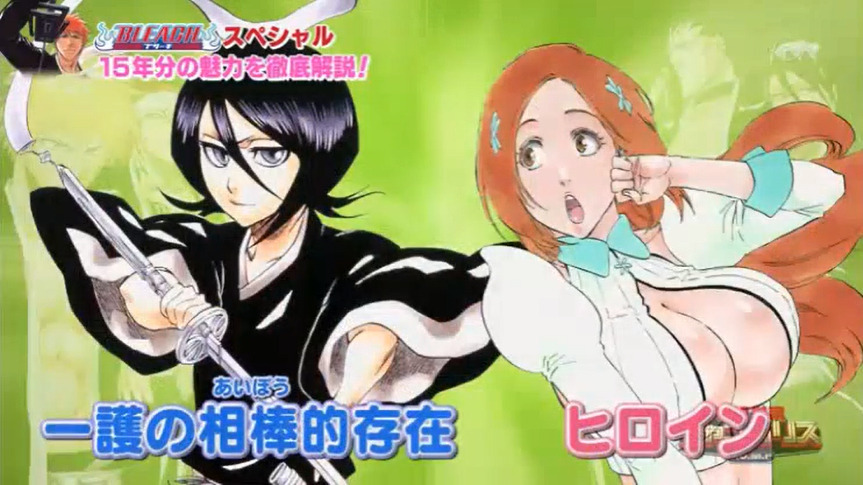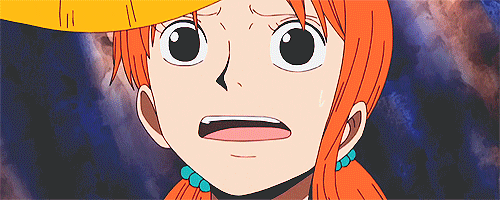My last analysis focused on in-universe pairing comparisons, and now we'll talk about a similar topic: inter-series comparisons made by LuHan wankers.
This is a variation of the argument "every is Dragon Ball," or its more modern iteration "every anime is Naruto." This kind of statements ignore the fact a lot of anime series have an identity of their own, as well as how each author has a different focus and offers his/her own takes on story/character tropes. I briefly mentioned this argument in a previous post.
Before delving a little deeper into this subject, I'll to clear up a few things.
I know I rarely mention any other pairings in my analyses aside from LuNa and NaLu. I typically avoid talking about other pairings from series such as Naruto, Bleach, My Hero Academia, etc. because there's no consensus among LuNa and/or NaLu fans on which premise is the better in each of these manga series, and I'd like to avoid getting involved in any potential drama coming from those fandoms.
I know it sounds somewhat contradicting, given I've been very vocal when critiquing several shippers' "sacred cow," and the people who claim to support potent relationships while actively endorsing nonsense. But, the difference here is the fact other series' pairings do not necessarily contradict or downplay the premise of LuNa/NaLu, nor negatively impact Oda's and Mashima's works.
Fans who consistently support LuNa and/or NaLu either love or hate some of the relationships I'll be mentioning, so I'll try to use the elements that are less likely to produce controversy (or stick only to the most important aspects), while still helping us to make our point.
With that out of the way, let's get started
Dragon Ball: Goku and Chichi
Our first stop is Dragon Ball. Shallow shippers claim Hancock is Chichi, so she'll end up with the hero, just like Chichi did. People who use this argument ignore a couple of important things.
First fact: Hancock is also known as the "Snake Princess" (Jap: 蛇姫, Hebihime), and DBZ had one of their own long before Oda began his manga career:
This character is also known as the "Snake Princess" (Jap: 蛇姫, Hebihime), even though the dub went with "Princess Snake." To make things short, as Goku was making his way to King Kai's planet, he meets this snake lady who becomes smitten by him, tries to seduce Goku, and ultimately fails because he already had a wife and a kid.
It's interesting that a lot of shippers, which include fandom wiki editors and twitter users, actively ignore the existence of this character and her more than obvious connection to Hancock. But, that's not the only thing they ignore
Over the course of the series, we see that Chichi is not the cute subservient waifu shippers try to sell. She openly and passionately questions Goku's actions and antics:
img]https://i.imgur.com/GVM1wJL.jpg[/i
Her temper and attitude are not consistent with the submissive and unquestioning person Hancock becomes when she goes lovestruck mode. They're more consistent with someone who challenges and openly questions their partner. Similar to a fiery character we all know...
Note: while Hancock is usually more composed, impervious to most things, and seemingly ready for anything while boasting her status and power (something that makes her quite appealing to fans), she becomes a subservient and overly compliant girl when it comes to the hero. Which, as explained here, is not consistent with the comparison they try to make
Third, both snake princesses likely take inspiration from the same yokai: Kiyohime
Art by Tsukioka Yoshitoshi (1890)
There are multiple versions of this folk tale, some of even them include a lot of details exclusive to them, but to keep things easy to understand, here's the basis of the story:
A woman who falls in love with a monk, but when he rejects her, she becomes a serpent creature to kill the monk.
While Boa Hancock's appearance matches the traditional depiction of this yokai, or at the very least Tsukioka's depiction, DBZ's princess snake is the one who follows the most similar story (Goku will never return her feelings, so she ends up transforming into a serpent to attack the hero). The most notable similarity between the 3 characters is the theme of unrequited love
Lastly, some people already know Oda's comments, but it seems we need to word them out in way they get the point they've been missing:
Oda told one of his editors that he doesn't intend to follow the same overly simplistic story that Dragon Ball is known for in Japan. That is consistent with his previous statement of writing a dramatic story because he knew One Piece wouldn't stand a chance against the likes of Dragon Ball as a mere fighting manga.
In fact, by his own admission, the author wants to "focus on the human relationships and emotions of the characters." Which can be seen in how the series handles actual romance to enhance the emotional narrative and add layers of depth that make the character's struggles a lot more compelling. Instead of something simplistic or childish, we get something deep and meaningful. Running gags and jokes don't hold enough weight to replicate this effect, let alone build up or deepen a bond.
Still, sticking to the idea of inter-series comparisons in this regard is like saying that if One Piece is merely doing what DBZ did in its time, then the hero won't end with the snake lady. So, no matter how you look at it, any time LuNa detractors use DBZ as an argument, they're shooting themselves in the foot.
Bleach: Ichigo and Orihime
More often than not, a manga hero ends up with the character filling the role of heroine for the story. It's something so common in japanese storytelling, that the Viewtiful Joe anime even highlights this trope.
In the case of Bleach, shallow shippers claim that Luffy is Ichigo, and Orihime is Hancock. One of the comparisons made between the girls is that their names include an "H." As if that's something important for an official shonen couple... Yoh/Anna, Kenshin/Kaoru, and Edward/Winry sent their regards
Also, there's the problem with the personalities. Orihime is an energetic, air-headed, kind and polite young girl. While Ichigo's character is defined by his chronic hero syndrome
The difference is clear, when you see Hancock is both arrogant and petty, and she's less likely to be polite and friendly with anyone not named Luffy and her sisters. Meanwhile, Luffy's character is defined by his neverending search for freedom and adventure.
The only similarities between them is Ichigo being the protagonist, and Orihime's "interest" in Ichigo.
However, people who make this argument, forget another important detail: what's the role of Orihime's character according to the author?
As explained in the post linked earlier, while Rukia was deemed as a "pal," Orihime was considered the "heroine."
So, even if we were to ignore the flaws in this argument and say that Oda would follow the same path as Kubo, we would be making the statement of the One Piece hero ending up with the "heroine." Oda gave a character the role of "heroine" of his manga, and he confirmed that fact twice. Spoiler alert: that "heroine" is not Boa Hancock
So, this argument is actually detrimental to the shallow pairing some shippers want to promote.
Naruto and Hinata
I've been avoiding this one for years, and I'll finally let it out of my system. This part was going to be a short analysis on the movie "The Last," but I repurposed it to fit this post.
I won't waste time debunking the so-called "similarities" between the characters. Instead, we're going to focus on the game-changer:
To craft a relationship, any decent writer would have to rely on impactful moments as motivation for the characters to grow closer to each other. This is the bare minimum for good writing
Keeping that in mind, what's the catalyst for the relationship between Naruto and Hinata? The genjutsu lake that trapped the movie cast in their memories...

The writer used this plot device so the moments the characters had, and their shared experiences, could have an impact powerful enough for Naruto to fall for Hinata. Regardless of how effective it was from a storytelling standpoint, that was the writer's intent
How is this relevant to the comparison LuNa detractors make? Well, think about the moments the writer used. Are they part of an actual emotional narrative or mere jokes to make readers laugh? Are they significant moments or gags that have little to no weight in the story and characters?

Even if we were to include anime filler, LuNa detractors have no moments that could fit into those memory orbs. And regardless of what critics think of Naruto, the movie acknowledged you need impactful moments to build a relationship, and that's something a shallow pairing lacks.
So, arguing that NaruHina is the "precedent" the One Piece author will follow is like arguing that the pairing that can better fit those orbs is the right choice for Luffy. Paradoxically, Luffy had moments with Nami that are deep and impactful, while he lacks such interactions with the snake princess.
So, what's the conclusion of this analysis?
Relying on inter-series comparisons is something that shippers do when their home series doesn't offer anything substancial for their pairing; it ignores how not every author writes the same story and characters; and even if we were to humor them, using these comparisons is more of a harm than a benefit to their cause. In fact, we could argue some of them can actually back up LuNa as the most logical and realitistic outcome.
Unlike shallow pairings carried by hype, LuNa does have the moments, and the actual chemistry, to get a relationship upgrade that feels both earned and real without unsettling neither character or story.So, next time you see someone justifying a pairing by using other series instead of moments or actual bonding, you know that person doesn't have a real argument.





